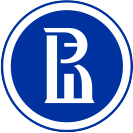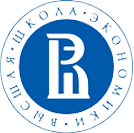The CRF findings are published on a dedicated portal together with the Index for Public Integrity (IPI) and the Transparency Index (T-Index). The portal uses different methods to visualise the CRF indices and data to ensure it is convenient for the users to get acquainted with them, in particular:
- there are interactive maps for both indices and the CRF that allow seeing the findings for each country; moreover, it is possible to filter the indices by year, region and income group;
- generalized rankings of countries are reflected in the indices, where countries are ranked by the total score and the score for each indicator;
- it is possible to compare the CRF data on countries in regions;
- aggregated information for each country is provided in the form of a profile including general data (region, income group, population etc.), the indices and CRF findings, and description of the main changes and trends influencing corruption risks in the country.
Index for Public Integrity
The IPI was developed back in 2015 and since then it has been considered as an instrument which is fundamentally different from other corruption measurement indices due to the fact that it employs prevalently objective data of external research for evaluation rather than surveys of public opinion, business community or experts. In particular, the IPI initially included the following indicators:
- administrative burden, which consists of the simple mean of such values as number of procedures required and time needed to start up a business, number of tax payments per year, time to pay taxes; the indicators were taken from the World Bank Doing Business Data;
- trade openness made up from the simple mean of such values as the total number of documents necessary for export and import, time required for border compliance for export and import procedures also stemming from the World Bank Doing Business Data;
- budget transparency that is a simple mean value of the scores resulting from 14 specific questions from the Open Budget Survey that cover transparency of the Executive’s Budget Proposal;
- judicial independence, based on the “judicial independence” indicator from the Executive Opinion Survey of the World Economic Forum asking the question “To what extent is the judiciary in your country independent from influences of members of government, citizens, or firms?”;
- e-citizenship, a simple mean of values of fixed broadband subscriptions, Internet users and Facebook users (% population) taken from International Telecommunication Union’s ICT Dataset and the Internet World Stats;
- freedom of the press, stemming from the NGO Freedom House’s report of the same name.
In 2021 the first two indicators were substituted – due to the lack of data used to calculate them excluded by the World Bank from its study – with the indicators administrative transparency, for the calculation of which a new T-Index was introduced, and online services, based on the indicator of the same name computed as part of the UN E-Government Development Index.
The value of each indicator ranges between 1 and 10, where 10 is the best result and 1 is the worst one. The IPI covers 114 countries for which data is not controversial (for instance, China, Saudi Arabia, and Azerbaijan were removed from the ranking because the data on these countries was not in conformity with this condition).
The Transparency Index
T-Index consists of two components:
- de jure transparency, which evaluates laws and participation in international treaties on transparency and accountability;
- de facto transparency, based on the analysis of completeness and accessibility of information on 14 online resources selected in accordance with the transparency categories defined by the UN Convention against Corruption and Sustainable Development Goal 16**.
De jure transparency is a dichotomous variable: a legal act/treaty is either in place/ratified or is not there/not ratified, whereas de facto transparency is codified dichotomously:
- an open and free access is provided to a resource with all necessary information – 1 score;
- a resource is in place, but information is either incomplete (in its content or coverage) or the access to it is somehow limited (for example, it is not free of charge, only specific categories of users have access to it etc.) – 0.5 score;
- a resource does not exist or the information it contains is explicitly insufficient for citizens to exercise control (for instance, the information provided is too general or outdated) – 0 score.
The evaluation of a country based on both components of the index and on the T-Index itself is aimed at achieving the target of 6 for de jure transparency, 14 for de facto transparency and 20 for the total index.
Corruption Risk Forecast
The CFR is calculated by professors Alina Mungiu-Pippidi and Michael Johnston, the lead ERCAS experts. The process consists of three stages:
- preliminary categorization of countries based on the evaluation of the IPI components (except for online services): at the first stage, the researchers consider the IPI indicators since 2009, identify significant changes whose value is above or below a global standard deviation of average change and then choose consistent changes of the latter if a country has progressed (or regressed) in at least two indicators and had not regressed (or progressed) in any. Based on the findings, the countries are preliminarily divided into three categories: ascending (consistent positive changes in corruption risks management), declining (consistent negative changes) or static trend line (no changes);
- check of radical political events (regime change or political violence) which occurred in the last 4 years in a country and if the sign of these events is in line with or contradictory to the long-term trends. In particular, the ascending trend line categorization can be reconsidered in the event that it a country seen a violent repression in the period under consideration, and vice versa;
- check of societal demand for good governance through re-examination of the e-citizens (digital citizens) component. Additionally, for particularly puzzling cases or where there is change, but it is under the statistical threshold, the latest edition of Transparency International’s Global Corruption Barometer is used, which includes the questions where citizens are asked if they perceive a change, and if so in what direction, and if they approve of the anticorruption stance of the government.
Based on the evaluation, the countries are divided into three categories:
- stationary cases;
- improvers; and
- backsliders.
In total, the CRF covers over 120 countries.
In spite of the fact that the developers of the Corruption Risk Forecast consider their instrument as fundamentally different from the previous tools to measure corruption, some experts assert the CRF is “pointless”, highlighting that the positioning of countries in the Corruption Perceptions Index (CPI) and the CRF is almost the same, whereas the latter could presumably differ from the CPI, as it is based also on objective criteria.
*The CRF is developed by the European Research Centre for Anti-Corruption and State-Building in cooperation with the Anti-Corruption & Governance Center (ACGC) under the Center for International Private Enterprise (CIPE).
** Sustainable Development Goal 16 is one of the 17 interconnected goals developed in 2015 by the UN General Assembly as “the blueprint to achieve a better and more sustainable future for all”. Goal 16 is focused on the promotion of peaceful and inclusive societies for sustainable development, provision of access to justice for all and building effective, accountable and inclusive institutions at all levels.

